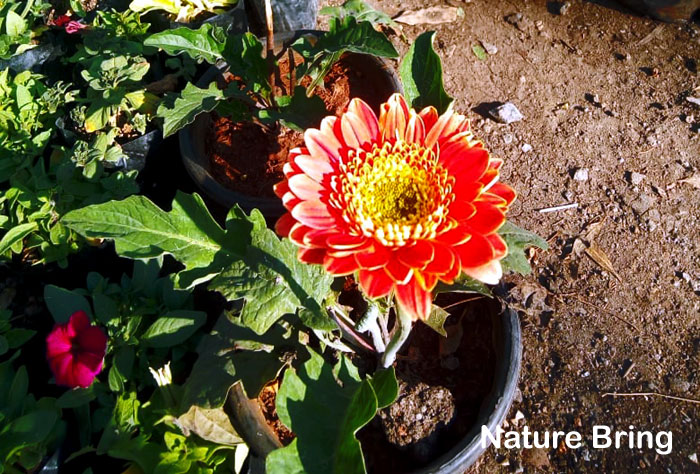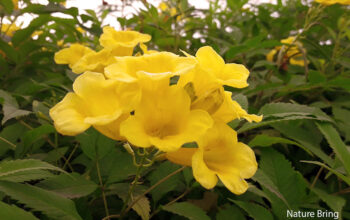Gerbera Daisies
Learn Growing Gerbera Daisies, How to grow Gerbera plants inside, Gerbera in containers, Pests, and diseases of Gerbera, and more information in this article. Daisy is almost everyone’s favorite flower. Gerbera Daisy is really very cute, and one of the most popular cut flowers. If they keep you in a vase, then run for at least one week, that is the reason people like to see it in their garden. Gerbera originates from South Africa and comes in different sizes (Single, Double or Multiple Petals) and colors, which are pink, yellow, orange and white, etc., the flowers are about 2 to 5 inches in size. For the well-care and better results of Gerbera plants, you should choose compact varieties; it is great for both container size and bed planting.
Popular names Gerbera flowers
It is popular with many names like Transvaal daisy, Gerbera daisy (Gerbera jamesonii). Its impressive colorful flowers grow on a tall stem, and its leaves are in attractive clusters which grow in the shape of the fuzzy lance. Depending on maturity and species, the height of Gerbera daisies is about 8 to 24 inches. However, these plants are grown annually but in the U.S. Department of Agricultural Plant Hardiness zone 8 to 11 they are grown as the Perennials. Once the spring frost has all the danger, you can put it in your garden. Read more.
Cultivated in India
Gerbera cut flowers are mainly cultivated in India, people of West Bengal, Andhra Pradesh, Orissa, Karnataka, Uttrakhand, Uttar Pradesh, and Arunachal Pradesh of India do its main cultivation.
Classification
Scientific name Gerbera Jamesonii
Common name Gerbera
Plant type Flowering plant
Sun requires Full Sun
Blooming time Summer to autumn (Depends on species)
Flower colors Red, Yellow, Orange, Cream, White, Purple, and pink
Soil well-drained soil
Soil pH 5.5-6.5
Zone 8-11

Growing Condition of Gerbera plant
Soil and location
To apply gerbera daisy out in the ground, choose a place where the full sun in the morning and shade in the afternoon. They are native to South Africa and do not like temperatures above 70 degrees Fahrenheit (21 degrees Celsius). Therefore, they should be protected from sunlight in the warm afternoon. They like a lot of light so you can keep them in a bright spot.
Gerbera daisy requires good moisture and well-drained rich soil, the pH range of 5.5-6.5 is best. But the roots of these plants are particularly susceptible to rot, it is necessary to improve the condition of excessive moisture and water. To amend the soil, add 2-inch fertilizer before planting it will improve soil drainage. Apart from composting, you can mix peat moss or some other organic material. Some sands can also be mixed in the soil, it improves drainage system.
Temperature
The Gerbera Flowers are grown in conditions of both tropical and subtropical climate. You can put it out in tropical conditions, however, these plants are sensitive to cold. In the subtropical area, you can put it in a greenhouse or house. For this optimum temperature is 21 to 25 degrees Celsius and night temperature is 12-15 degrees Celsius.
Spacing
Allow the distance between the plant to be 18 to 20 inches to apply in Gerbera Daisy Outdoor. The place where the main stem meets the ground, stay up a bit because the crown can be damaged if it comes in contact with the soil.
Watering
During the summer months, when the growing period of gerbera occurs, it requires water independently. Cut the water during the winter.
Feeding
Apply it to the general-purpose liquid feed fertilizer every two weeks intervals.
Flowers Pollination
It helps to make your plant more viable seeds, you can use a small brush (makeup brushes or paintbrush) to spread pollination from one flower to another. Or when you cut flowers for use in your vase, then you rub it against other flowers, it helps in spreading pollen.

How to grow Gerbera Daisy plants in container
- Gerbera can be planted very easily by seeds and partitions. Seed cultivation is cheap and easy too, but the seeds should be instantly grown otherwise they lose viability immediately after opening. It is easy to grow from planting plants and you can also know the type of flower. If you have old plants, then lift the crown and can divide in the spring.
- Prepare seedling trays for seeds, first of all, fill the tray with a light growing medium, for this, you can make a potting mix by using peat moss, perlite, and vermiculite. See for more information. Wet the medium with water, wet it.
- Hole in the planting medium from the back of a toothbrush. Put 2 to 3 seeds Gerbera daisy seeds in each trick, and cover the seeds lightly.
- Keep moisture in the seeds, but water should not be stored. Keep temperatures above 70 degrees Fahrenheit and keep the tray in the sunlight 6 hours per day or brighter light. You can also keep your tray covered by plastic sheets. After covering, place the tray in a warm and light spot. Its seeds sprout in two to three weeks.
- Remove the plastic cover, but keep moisture in the plant.
- After some time when two sets of true leaves in Gerbera daisy grow, you can transplant it in large containers.
- If the outside temperature is constantly warmed, then take your plant to a safer place for a few days, when the plants become stiff, keep it out.
- Now your plant is ready to blossom, you can put it in your terrace, patio, or outdoor. The morning sun is very good for this plant, if the sun is too hot, then shift the plants to a safer place.
- Feed the regularly balanced organic fertilizer plants, give regular water, but should be well-drained.
Harvesting
Generally, its plants start producing flowers after 3 months of planting. When the flowers are open to full or when the outer 2 to 3 rows of disc florets are perpendicular to the stem, then you can curve cutting.
Weed control
While cultivating gerbera, weed control is a major challenge, which is necessary to remove it in every second, third week.
Pests and diseases of Gerbera
Gerbera is often disturbed by the nuisance of leaf miners, due to which the leaves are bent. Its eggs and larva are in the leaves. Always check the presence of caterpillars or cutworms, if the leaves are chew, they can be present. To control them, you can choose caterpillars or cut warms by hand.
The presence of small insects aphids can also trouble your gerbera. You can spray pesticide soap or horticultural oil to finish them. Horticultural oil may also be effective against thrips. This spray works effectively even on tiny insects, spider mites, and minuscule bugs.
Water these plants regularly, however, when the soil becomes dry, due to the lack of a proper process of water, fungal diseases will get a chance to grow. This causes problems like discolored flowers and wilted, rotting leaves and stem.
Due to the lack of proper air circulation, mold, mildew, get the chance to grow. Separate the affected part immediately, otherwise, it will affect the other part of the plant. Read more.
Also Read: How to grow Lotus in the container. How to grow Custard Apple in containers. Growing Bougainvillea. 10 most fragrant flowers for your garden. Betel leaf plant growing and care tips. Growing and care for peanut plants. Kalanchoe growing and care tips. Ashwagandha plants growing guide. Petunia flowers growing guide. Bougainvillea flowers growing and caring.
Happy Gardening
For Pin:






